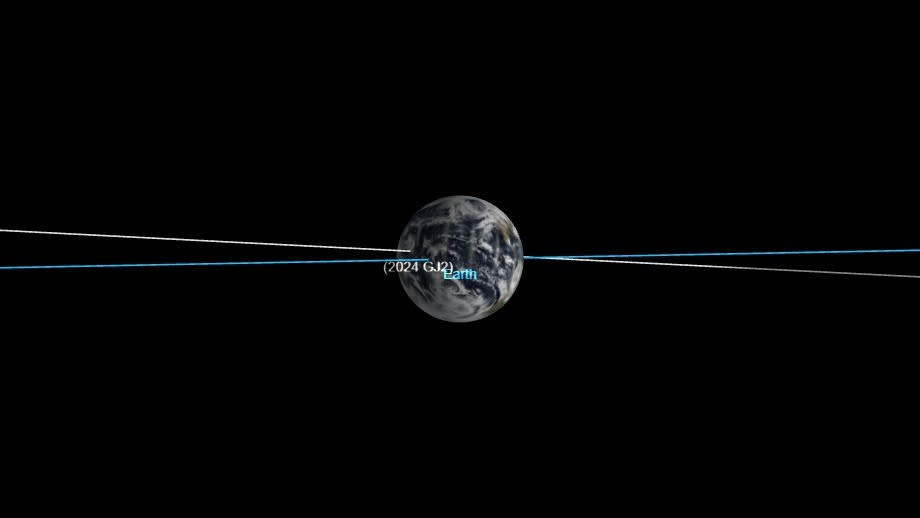Car-size asteroid gives Earth a super-close shave with flyby closer than some satellites

An asteroid discovered Tuesday (April 9) will make an extremely close, but harmless, pass by planet Earth today (April 11).
Asteroid 2024 GJ2 is roughly the size of a car and, since its discovery this week, astronomers have calculated that the space rock will graze by Earth at a mere-12 thousand-mile (19.3-thousand-kilometer) distance — that's just three percent the distance between the Earth and the moon. 2024 GJ2 measures between 2.5 and 5 meters (8.2 and 16 feet), according to the European Space Agency (ESA). This means it's an asteroid with a weight-class that would have burned up in Earth's atmosphere, if its orbit happened to intersect ours more directly.
Astronomers believe the asteroid's closest approach distance to Earth will occur at 2:28:42 p.m. EDT (18:28:42 GMT) on Thursday, at a distance of 11,600 miles (18,700 kilometers). That's closer than some geostationary satellites in orbits just over 22,236 miles (35,785 km) above Earth.
Related: Asteroid Apophis will swing past Earth in 2029 — could a space rock collision make it hit us?
Related Stories:
— Asteroid Apophis will swing past Earth in 2029 — could a space rock collision make it hit us?
— NASA's DART mission hammered its target asteroid into a new shape. Here's how
— NASA's Lucy asteroid-hopping spacecraft pins down surface ages of 1st asteroid targets
The next closest flyby of 2024 GJ2 won't occur until 2093, according to ESA's near-Earth objects coordination center. When that happens, the asteroid won't pass nearly as close as it will today. GJ2's 2093 approach is estimated to fly as close as 127,970 miles (205,947 kilometers) to us — 10 times further than today's flyby, and just over half the distance between Earth and the moon.
NASA has cataloged nearly 35,000 near-Earth asteroids to date, though very few of those pose any threat to the planet.
Editor's note: This story was updated to correct the flyby distance of asteroid 2024 GJ2 via NASA's JPL Asteroid Watch tracker. It is 11,600 miles (18,700 kilometers).

